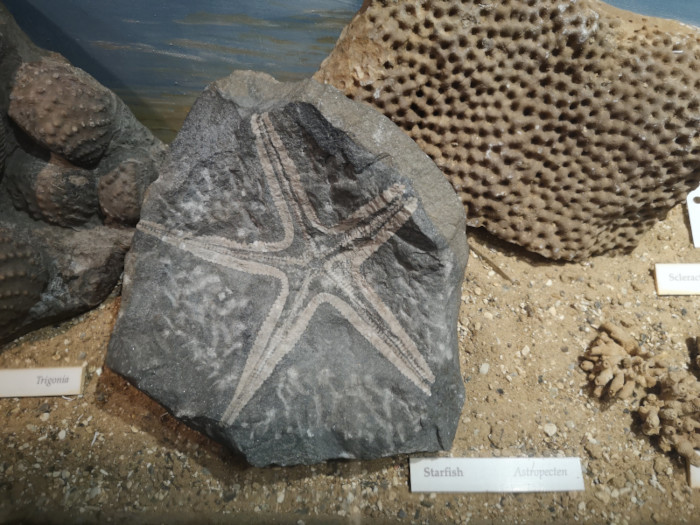Make your own Anglerfish mask and discover how this crafty fish tempts in its prey...
Make your own rat-shaped shadow puppet then use it to try some shadow experiments.
Salt dough is easy to make and can be used to make all sorts of models - including starfish. This activity will show you how.
Fossil Jurassic star fish from the Sedgwick Museum

The Fitzwilliam Museum has real Tudor armour in its collection. Create your own 'knight' at the museum with this easy to create, cut-and-colour diorama.
Learn about the history of using light and shadows in storytelling. From countries around the world to stories in your home town. Practice making hand-shadow animals, make a shadow puppet to tell the story of Moses Carter, the Histon Giant, and find out how you can make your own shadow puppet theatre!
This event is suitable for children ages 6 and above with an accompanying adult. It is not suitable for younger children unless visiting with an older sibling.
Which do you think is the fastest, or the slowest of three main types of earthquake waves – surface, P waves and S waves? Have a race to find out.
In this activity you will see the difference in compressional P waves, transverse S waves and circular surface waves that are produced by earthquakes. You will need a big group of at least 15 people split into three groups.
Following an exploration of the Kettle's Yard House or temporary exhibitions, get creative with an artist-led workshop inspired by themes, ideas or materials explored.
These sessions can be tailored for your specific class or learning outcomes and are delivered with our Learning team and one of our associate artist facilitators. Sessions run for around 2 - 2.5 hours and are £180 per class (£230 for fee-paying schools).
Enquire at: schoolbookings@kettlesyard.cam.ac.uk
Using the Kettle's Yard House and art as stimulus, students will learn and apply critical and creative thinking skills to make connections, make observations and explore ideas before making their own artworks to take with them.
Sessions tailored and recommended for EYFS, KS1, KS2 & KS3
1.5 - 2 hour session, £75 per class
* £125 per class for fee-paying schools.
enquire at:schoolbookings@kettlesyard.cam.ac.uk
This kit contains all the material you will need to make paint using pigments and a medium just as artists did (before ready-mix paint!). You can construct an experiment for students to explore the role of science in both the artist’s and the scientist’s workshop with reference to the technical analysis of the Renaissance painting, Cupid and Psyche by Jacopo del Sellaio. There is material provided with the kit that supports each of the suggested activities below.
Suggested activities
There are many different types of volcanoes. Shield volcanoes have a broad rounded shape and gentle splattery eruptions often described as fire fountains. Strato volcanoes are sharp and steep sided and have violent explosive eruptions. But what makes these two types of volcano look and erupt so differently? It is mainly controlled by how think (viscous) or runny the magma in the volcano is...
In this experiment you can use 3 different thickness (viscosity) liquids to see what differences runny or thick magma can cause in volcanoes.

